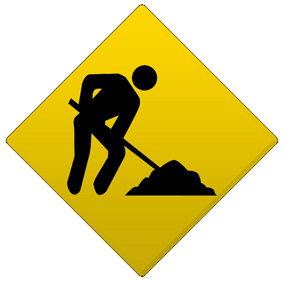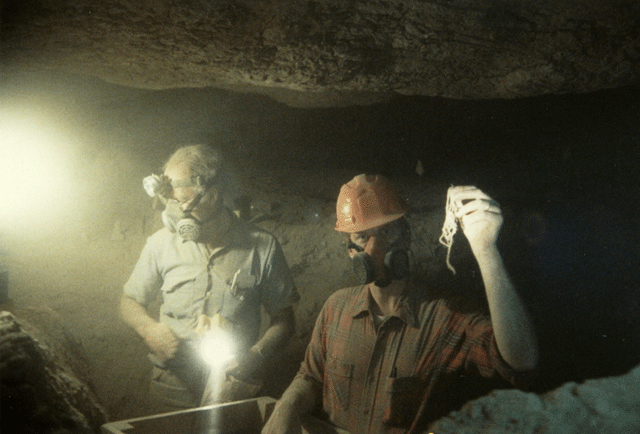

This learning path is under construction.

Excavation in U Bar Cave, N.M., in 1986. Photographer unknown.
Maxwell Museum Catalogue No. 2007.80.47.
People first began digging up ancient objects as curiosities or works of
art. In time, a new focus emerged: using objects as a way to learn
about ancient people. In this way, the science of archaeology was born.
This section will help you understand how archaeologists use objects
to learn things about ancient human behavior, even though that behavior
can't be observed directly.
The first principle we'll cover is so basic to archaeology, there isn't even a name for it! When you find a bit of something, you determine what it was part of, and assume that the whole object existed at one time. The photograph above shows an archaeologist holding up a small tangle of string. But what is it doing in a dry cave in the "boot heel" of New Mexico? Someone didn't climb a hillslope and crawl into a cave just to leave a tangle of string. Instead, we know, local prehistoric people repeatedly created offerings consisting of feathers and other materials, tied them together with handspun cotton string, and placed them in the cave. Careful study of the string can help determine whether it was part of a religious offering. Once that determination is made, the archaeologist sees the entire offering—and from there the religious behavior—rather than just a piece of string.
Click on the thumbnail to see another example of using a small found part to infer the presence of the whole object.
One technique for identifying artifact use is called "ethnographic analogy." Look for a similar object in use among living people, and find out how they use it. Ethnographic analogy allows us to identify the following object, for example. Click on the picture to find out more about it.
Ethnographic analogy is not foolproof: similar objects sometimes have very different uses. Archaeologists guard against improper ethnographic analogies by asking supplemental questions. Was the object found in a setting consistent with the supposed use? Are the wear patterns on the object the ones we would expect from the supposed use? And so on. The combination of (1) research among living people and (2) close examination of prehistoric objects often results in a reliable identification of an artifact's function, even when that function is not obvious from looking at the artifact itself.
Image of U Bar Cave excavation courtesy of Curtis Schaafsma. All other content copyright © Maxwell Museum of Anthropology, University of New Mexico. High-resolution versions of photographs may be ordered from the photo archives. Please make note of the catalogue numbers. For more information please visit the photo archives web page
Page last revised on May 27, 2011. Please report problems to toh@unm.edu